We recently talked about the two new LEGO City trains that integrate the reworked LEGO Power Functions system (see: LEGO City Trains with New Power Functions). To summarize the most important changes from our previous discussion; the new system works with Bluetooth instead of infrared, the connectors are now the same as the LEGO BOOST connectors, and the receiver got integrated into the battery box. While the battery box and the train motor looks pretty much the same as the previous versions, the remote control got a complete redesign. In addition to controlling the system with the remote, it can also be operated via a free app that’s compatible with most phones and tablets. 🙂
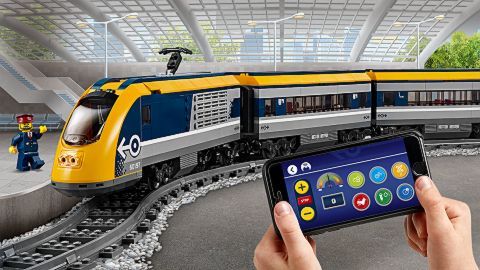
Another important point is that even though most of the components look very similar to the previous LEGO Power Functions elements, because of the use of Bluetooth instead of infrared, and because the cables and connectors have been redesigned, the new LEGO Power Functions parts are not compatible with the old ones. However, redesigning these components was necessary to begin integrating LEGO Power Functions with LEGO BOOST, and LEGO WeDo, (and perhaps LEGO Mindstorms). Making all the power and robotics systems compatible is the right direction for the future, as it will allow LEGO fans a lot more freedom to motorize and program their creations.

The new LEGO City trains include three of the LEGO Power Functions 2.0 components; the train motor, the battery box, and the remote control. Trains can easily accommodate the fairly large LEGO Power Functions components; the train motor becomes the base of the engine or any of the train cars, and the battery box can be hidden inside the body of the engine or one of the cars.

LEGO Power Functions are also often used in larger LEGO Technic vehicles and motorized stationary models, like the LEGO Creator Fairground sets. If the model is large enough, both the battery box and the motor(s) can be hidden inside without too much trouble and awkwardness. However, with smaller vehicles, using LEGO Power Functions is challenging, because of the large size of the battery box and motor. No longer needing a separate receiver is a major improvement, but you still need enough space to keep the battery box and at least one motor onboard of the vehicle.
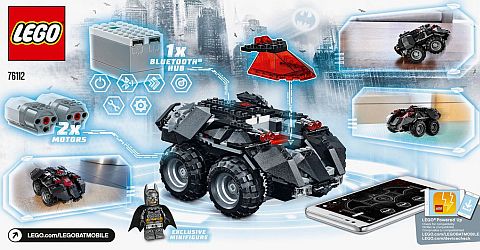
In August of this year, we are going to get another new set with the updated LEGO Power Functions components. The #76112 LEGO DC Super Heroes App-Controlled Batmobile includes the new battery box (also referred to as Bluetooth Hub), and two new motors. It appears that this set does not come with the remote, only app control, although I’m fairly certain it can be operated by the standard remote too.
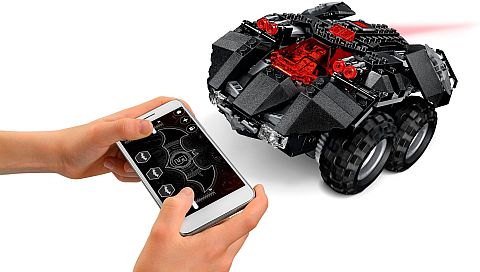
Here is the official description of the set: Speed to Gotham City crime scenes with the motorized #76112 LEGO DC Super Heroes App-Controlled Batmobile. This cool vehicle features 2 motors powered by a Bluetooth-controlled battery hub, an opening minifigure cockpit, 4-wheel drive and 2 dual stud shooters. Simply download the app to control the vehicle from your smartphone or tablet. Press down on the roof to turn it on and off. Includes a new-for-August-2018 Batman minifigure. Batmobile measures over 3” (9cm) high, 7” (19cm) long and 5” (13cm) wide. 321 pieces. Price: $99.99 – SEE AT THE ONLINE LEGO SHOP
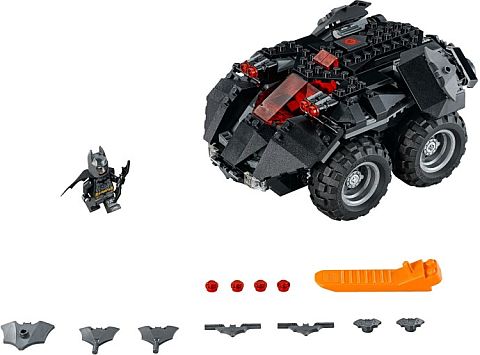
As you can see, this Batmobile is not particularly pretty. The chunky appearance is somewhere between a tank and a toy car for toddlers. Definitely not something we would expect The Dark Night to ride. It seems like LEGO designers were going for the smallest shape possible that they can still cram in the battery box and two motors. On the positive side, the stocky shape makes the vehicle easy to maneuver, and it can even do wheelies! (See demo video below by the Brothers Brick.)
As I mentioned in our discussion about the LEGO City trains, there are still lots of questions and concerns about the new LEGO Power Functions system, which, hopefully, will be answered soon by LEGO designers, or by LEGO fans who have the chance to try out the components. Both LEGO City Trains and the LEGO App Controlled Batmobile will be available in August, so we will have some new sets to experiment with.

Unfortunately, all three of the sets that include the new LEGO Power Functions elements are on the expensive side. The #60198 LEGO City Cargo Train is $229.99, the #60197 LEGO City Passenger Train is $159.99, and the #76112 LEGO DC Super Heroes App-Controlled Batmobile is $99.99. While the two trains are reasonable for what you get, the Batmobile, with only 321 pieces, is unusually expensive, even with Power Functions included (the battery box should be around $15, and the motors around $10 each). It looks like we will need the wealth of Bruce Wayne to afford them, or, just wait until the components are available individually.
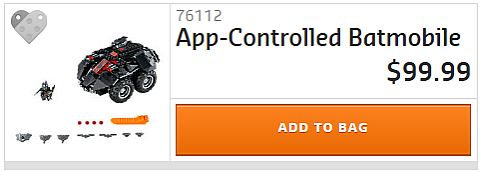
For more information about the new LEGO Power Functions system and the corresponding LEGO Powered Up App, including some very helpful FAQ, visit the official LEGO Powered Up page. I also recommend watching the comparison review by Sariel, where he takes a look at the components and capabilities of the new Power Functions system next to the old one. I included this review in our last discussion, but I thought to add it here again for your convenience.
What do you think? How do you like the LEGO Power Functions upgrade? Do you have any questions or concerns about it? And what do you think of the App-Controlled Batmobile? Feel free to share and discuss in the comment section below! 😉
And you might also like to check out the following related posts:












The trains are the most useful options I think. You get everything besides the small motors, and there is lots of play and display value. The Batmobile is just too gimmicky.
The batmobile is ugly and expensive. Much rather get the trains or wait until more sets are available with power up.
Well, it may not be the best looking Batmobile, but it’s a good way to test out the capabilities of the new system and the app control. I would have liked a remote too though to justify the high price.
What I’m really curious to see is how they are going to continue to combine Boost with the PF system. Is there any news on upgrading Mindstorms?
I think the EV3 Mindstorms started the app controlled craze.
I haven’t spoke with anyone that has the EV3 system and the boost to see what types of integration there possibly is.
BOOST and EV3 are not compatible as far as I understand. I’m fairly certain that eventually they will make that move. Mindstorms is getting pretty outdated and badly need an update anyway, so it makes sense to update and integrate at the same time.
There has been no news on Mindstorms, but my understanding is that LEGO is planning to integrate that as well. My guess is that once all the PF components are out and integrated with BOOST, Mindstorms will be tackled next.
My phone and hub battery life is very short. Do you have any suggestions for preserving batteries? I am using the Batmobile with app/Bluetooth controller. On another note using the train, in order to navigate a curve in the track, do I need to consider the differential on the axle to power through the turn? Right now the train stops moving when I approach a curve in the track.
As far as batteries, yeah, both the app and the new hub drain power pretty quickly. You might consider switching over to rechargeable batteries. There is also going to be a hub with rechargeable batteries, but I don’t know when it is going to be available.
As far as your train question, there could be several issues. If the train is too long and heavy it could have trouble going through curves. Also, if the train axles are too far from each other, or the curves are too tight, that could cause problems as well. What I usually do when building custom trains is to test both the engine and each car separately on the curves to make sure they run smoothly. In general, if you keep the same dimensions as official LEGO trains and tracks, they should be able to handle the curves without problems.